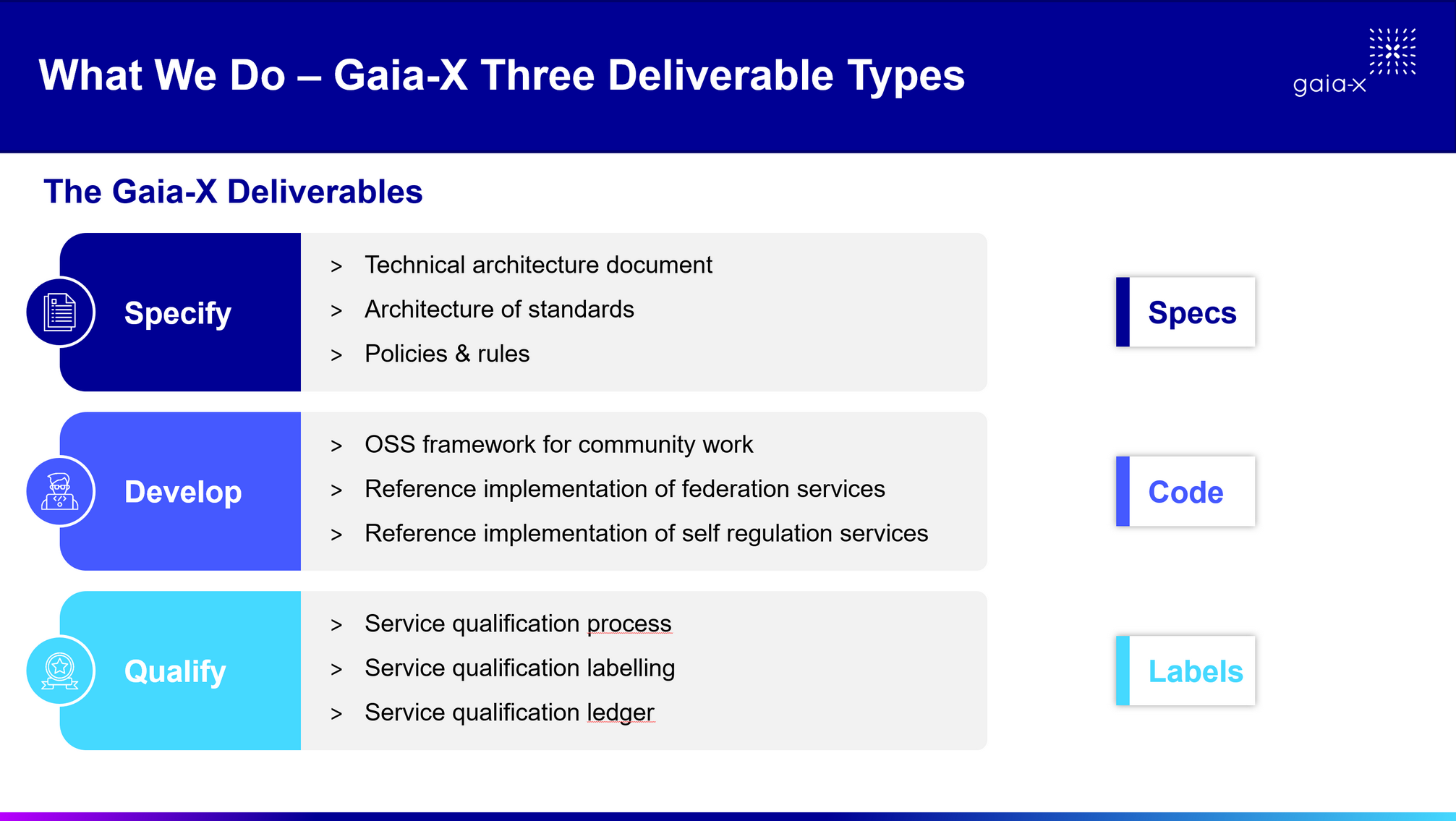Gaia-X aims to create a federated data infrastructure based on European values. The mission of Gaia-X is to specify the requirements, design the architecture and implement the SW components necessary to connect multiple participants in a federation, ensure interoperability across them, guarantee transparency and controllability of services through a common description format, common identity management and common compliance verification mechanisms.
In simple terms, Gaia-X develops an interconnection across service providers and service users, to ensure trust amongst the two thanks to a technology layer that implement the values of transparency, openness, interoperability, and reversibility of the data.
Central to this mission is Gaia-X’s ability to generate labels, which are the evidence of the compliance of a certain service to a specific set of rules (rulebook) defined by the AISBL or by an external entity. Labels can only be assigned to a service, and not to a provider, thus ensuring that the compliance can only be obtained through the Labelling Framework verification mechanisms.
Labels constitute a facilitation in the procurement of services and an effective method to build trust between users and providers. Searching for services with a certain label, users will be guaranteed to fulfill a series of complex verifications in conformity with the Gaia-X requirements.
Through the definition of Labels, and their verification through the technology framework, Gaia-X offers the possibility to certify their services to any provider willing to operate in the European market, based on their willingness to expose their service description according to a common standard, adopt a common identity management and be inspected according to common rules. Label owners could be on different types (sector specific or country specific, with Gaia-X owning itself 3 different basic labels Level 1, Level 2, level 3 ), having defined a basic labels a set of criteria called ‘verifiable credential’.
Gaia-X Association will not deliver any service, nor will it operate under its legal entity any service of the Gaia-X framework, that will be by default decentralised and run across the network of Gaia-X participants. In this way, there won’t be any conflict of interest with any potential Gaia-X user or provider. It will not become a market operator, with the implied intention of selling, operating or distributing its own cloud license on the data market. Equally, it will not aim at building its own market infrastructure, with the implied intention of becoming a provider of cloud applications and/or services within the European market of data.
Gaia-X will design the specifications and develop the necessary technology components to make all the above possible for users and providers in the market to develop their own common data spaces and common infrastructures.


